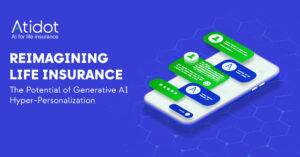The Current State
The U.S. life insurance industry’s average annual growth over the past 10 years has been less than 2% in nominal terms and negative in real terms. Meanwhile, the average face value amount of individual life insurance policies purchased in the US has steadily increased from $110,000 to over $170,000 (McKinsey Research), indicating that life insurers are failing to reach the middle market.
According to McKinsey’s mass affluent research in 2015, only 65% percent of Americans who are married with dependents have a life or an annuity policy, while 97% own an investment account. Different research by LIMRA shows that only two-thirds of Gen Y consumers have any kind of life insurance compared with three-quarters of Gen X and Boomers. In addition, fewer Gen Y consumers own individual life insurance (34 percent) than Gen X consumers (45 percent). More than half of Baby Boomers report owning individual life insurance (52 percent).
Why is the Life Insurance industry struggling with getting those Next Gen’s on board?
Failure to adopt new technologies is a prominent factor. In 2019, some 68% of insurance agents under 40 said that the insurance industry is too slow to adapt to change. There are 310 Insurtech startups in the US alone, so why is it so slow? The answer has to do with business culture, slow financial process, and low-level digitization but is also connected to low consumer engagement.
In the 90s, Jeff Bezos said that the biggest impact on e-commerce would be to reduce the friction between an intent to buy and the time it takes for your computer to reboot and connect to the Internet. This was when booting up still took a good five minutes. Purchasing a life insurance policy, on the other hand, takes 55 days on average.
Customers today expect their service providers to provide service. From the get-go and for life. Amazon offers you products that people like you buy. Spotify learns your music preference. Similarly, life insurance companies have the opportunity to be long-term partners. Unfortunately, the existing client base, representing over 80% of the business, captures less than 20% of the managerial attention.
However, we have seen that by utilizing Amazon-like engines for providing service, targeted agent communications, and recommendations, carriers can more than double the premium received over the term of the policy.
This is where new and advanced technologies play a role in bridging the gap between the ‘old’ and the ‘new’ to increase traction with next-generation customers.
With the outbreak of the Covid-19 pandemic, things are ripe for a change. Digitization turned from an interesting trend to a necessity as companies and, more importantly, brokers and agents transitioned to working on a remote basis. Digital adoption in the insurance industry globally grew by 20% in 2020 and is expected to accelerate even further.
From the top 200 insurers that were surveyed in a Deloitte research, it was stated that 23% of their premium volume was a result of new initiatives and that they expect it to grow by 33% in the next 5 years. The number one trend is data innovation.
Next-Generation Technologies
Data is the currency of the future. The insurance companies that successfully utilize AI and Machine Learning to power their strategy and provide a customer-centric experience will prevail.
The barrier to applying new technologies to Life Insurance is not only a lack of digital data but also the low quality of the available data. The ability to produce intelligent insights via AI algorithms is totally dependent on these two factors. Therefore, enriching insurance data with qualitative external resources is of great importance.
Traditional life insurers need to become much more proactive in preparing themselves for the fierce competition they will soon face from fully digital, agile Insurtech companies offering friendly, personalized, easy-to-understand policies. NextGen customers expect no less – 88% of insurance consumers demand more personalization from insurers, but until now, most carriers haven’t implemented a reliable means of providing that personalized service.
New technologies can transform data into actionable insights, thus enabling providers to empower their agents to address the unmet challenges and optimize their books of business.
This new approach is revolutionizing the life insurance industry, and together with other advanced front-facing systems, next-generation customers can learn to expect and receive better products and services from Life Insurance providers.



 min read
min read 
 min read
min read

 min read
min read
 min read
min read


